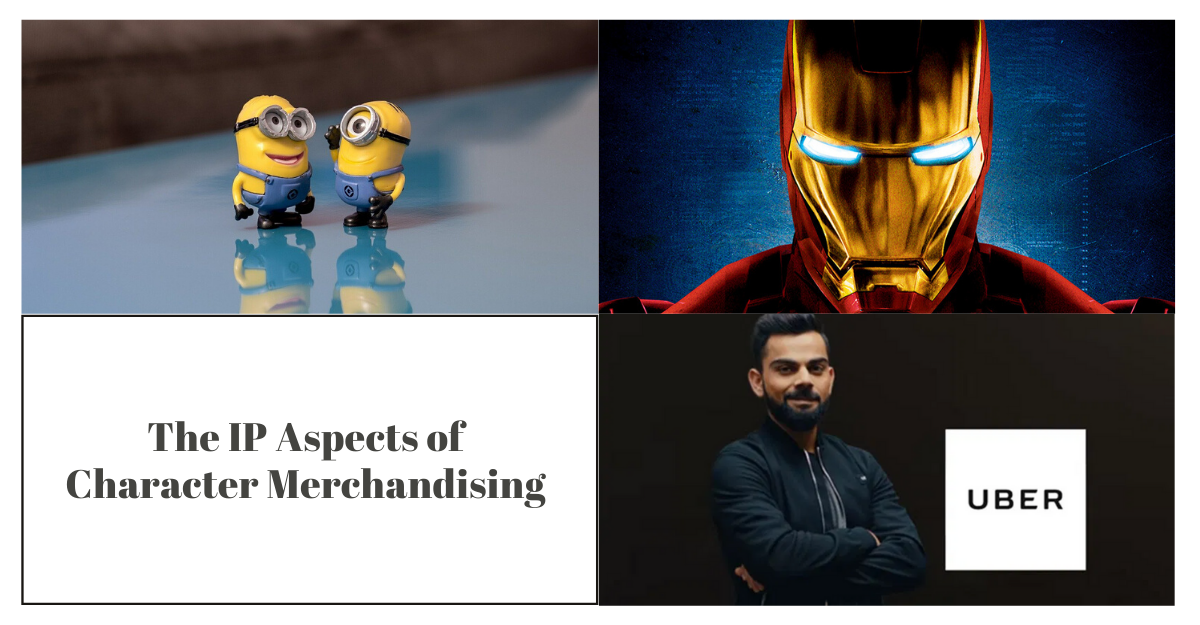
The IP Aspects of Character Merchandising
According to WIPO, character merchandising is the adaptation or secondary exploitation of a fictional or real-life character either by the creator or by an authorized party. This exploitation concerns the essential personality features of the character, such as name, image, or appearance, used in particular products/services. The objective is to create an association between the products and the personality features so that the product/service becomes appealing to the customers because of their attachment to the character. Character merchandising has become an effective marketing strategy for many companies to generate profits. Merchandise like shirts, bags, toys, etc. displaying essential personality traits like name, physical features, or tagline of the characters is manufactured and sold.
Character merchandising can be carried out either by the owner of the character, i.e., the person who owns the Intellectual Property rights over the character, or a different individual/company can do it after receiving a license from the creator. The right of character merchandising has become ancillary to IP rights.
Cartoon character merchandising was first started by Walt Disney Co. when it began licensing the usage of its famous cartoon characters like Mickey Mouse and Donald Duck on consumer products. Fictional/cartoon character merchandising uses the dialogues, images, and names of the characters. An example can be using Mickey Mouse on the wrappers of Cadbury chocolates. These fictional/cartoon characters can be from literary works like Calvin and Hobbes, artistic works like Mona Lisa, and cinematograph films like Harry Potter and Lion King. It can also be mascots of sporting events like FIFA. Whenever a fictional character is created, it automatically receives copyright protection.
Using famous persons or celebrities from sports, movies, music, etc. to endorse goods and services is called personality merchandising. These persons are well known to a large section of society. This method is profitable because customers will find these products endorsed by their favorite celebrities to be relatable and will also want to use these products, which are supposedly used by the stars themselves. An example of this can be various beauty products endorsed by Bollywood celebrities like Alia Bhatt and Aishwarya Rai.
Image merchandising is a combination of fictional character merchandising and personality merchandising. This refers to fictional characters, which are played by a real-life actor. Here, the character is identified by the public through both the essential personality features of the real-life person and the fictional character. An example of this can be the character of Iron Man played by Robert Downey Jr and the character of Krissh, played by Hrithik Roshan.
Character merchandising falls under the scope of many IP laws like copyright, trademarks, and designs. Primarily, copyright provides better protection to the owner or a licensee. Whenever a fictional character is created, it automatically receives copyright protection. In the case of a character from a cinematograph film, the producer is considered to be the author of the film. In the case of a cartoon character, the producer will have all the rights to exploit it. However, if a real-life person is playing the character, a conflict may arise concerning performers’ rights. The Copyright Act, 1957, seems to be in favor of the producer and other copyright holders.
Section 2(d)(v) clearly states that the producer is the author of the cinematographic film, and Section 14(d) says that the owner has the exclusive right to make a copy of the movie, including an image that forms a part of the film. Section 38(4) states that once a performer has consented for his performance to be incorporated into the film, the performers’ rights come to an end. Therefore, by reading these provisions together, it becomes clear that the producer has exclusive rights, including the right of character merchandising.
In Arbaaz Khan v. North Star Entertainment Pvt. Ltd., the Bombay High Court established that the copyrightability of a character depends upon its uniqueness. In deciding whether copyright exists in character Chulbul Pandey from the Dabangg movies, the Court held that copyright subsists as long as the character has unique traits and if the literary work in which the character was written and developed was copyrightable and distinct in nature.
In Star India Pvt. Ltd. v. Leo Burnett, the plaintiffs were the producers of a TV show “kyunki saans bhi kabhi bahu thi” and the defendants had made an advertisement for “Tide detergent” with a similar tagline and similar characters to those depicted in the show. The Court opined that “The characters to be merchandised must have gained some public recognition, that is, achieved a form of an independent life and public recognition for itself independently of the original product or independently of the milieu/area in which it appears.” The test of substantial similarity was applied to the case at hand only to conclude that prima facie, quantitatively and qualitatively, the two works are different, and there is no work of substantial copying or similarity between the two.
In Disney Enterprises & Anr. v. Santosh Kumar & Anr., the Delhi High Court, found the defendants (Santosh Kumar) liable for selling products that displayed characters like Hannah Montana, Winnie the Pooh, etc. as the character merchandising, rights were owned by Disney Enterprises (plaintiff).
In conclusion, character merchandising has emerged as a profitable marketing strategy that many companies can capitalize on by enforcing their IP rights.